
Some breads, including tortillas and flatbreads, don't have a leavener, but most baked goods need a leavener to gain their light, fluffy texture or rich flavor. Use baking soda for cookies that contain brown sugar, buttermilk or fruit, but when you want a fine texture, stick with baking powder for cakes, muffins, pancakes and quick breads. Yeast is the leavener you taste in yeast breads. Most leaveners lose their effectiveness within a year, so check the label for an expiration date.
Chem Lab 101
Baking soda and baking powder are the two most commonly used chemical leaveners. Baking soda, or sodium bicarbonate, is a naturally alkaline product derived from ore, most of which is mined in the Green River Basin in Wyoming. When baking soda mixes with acidic ingredients such as buttermilk, molasses or fruit in baked goods, it releases carbon dioxide bubbles, which cause the baked good to rise. If a batter doesn't have enough acid to neutralize the baking soda, you might notice a bitter, soapy flavor. Baking powder is baking soda that's been combined with an acid, such as cream of tartar, which eliminates the need for an acidic ingredient. Baking soda tends to create a shaggy, coarse texture, which is why it's used in cookies. Baking powder creates a finer texture, making it a good choice for muffins and cakes. Use 1/4-teaspoon baking soda or 1-tablespoon baking powder for each cup of flour in a recipe.
Naturally Speaking
Yeast is a naturally growing fungus, which can be harvested in the wild, as in the case of sourdough starters, or duplicated commercially in a lab. Yeast needs moisture, warmth and a food source such as sugar to grow. Under these conditions, yeast begins to bubble and rise, releasing carbon dioxide bubbles. When added to a flour dough, the yeast interacts with the gluten in the flour and causes the bread dough to rise. Commercial bakers may use cake yeast, but most home bakers rely on active dry or instant yeasts. These types of yeast are interchangeable, but instant yeasts dissolve and make bread dough rise faster than active dry yeast. To maintain the freshness of yeast, store it in your refrigerator or freezer. If you buy it in bulk, divide the yeast into smaller portions and freeze it. Use yeast within one year for best results.
Air and More
Perhaps you haven't thought of butter, sugar or eggs as leaveners, but when they're beaten together, they help leaven the food, which is why many recipes ask you to cream them together for 5 to 10 minutes or until golden yellow. Creaming butter, eggs and sugar together creates air pockets in the batter, and as the batter bakes, these air pockets create a light, fluffy product. Butter also contains water, which evaporates during baking, which can also cause the baked good to rise. Eggs have a number of roles in baked goods, but their starring role is as a binder. The protein in the eggs gives structure to the batter so it's neither stiff nor crumbly, but the eggs also act as a leavener when they're beaten with butter and sugar. Folding beaten egg whites into a batter serves the same purpose.
Heirloom Agents
Before modern leaveners, such as baking soda and baking powder, were invented, cooks used creative alternatives, such as salt of hartshorn, which was made of ground deer antlers and used extensively in Scandinavia. The product is almost impossible to find today, although you can special-order baker's ammonia, a similar product, through online or specialty baking supply companies. Early North American Colonists relied on pearlash, which is made from purified potash, which comes from wood ashes. Pearlash, which has a strong, bitter taste, was replaced by saleratus, an early version of modern baking soda.
Related Articles

Does It Matter if I Substitute Baking ...

Does Yeast Cause Holes in Bread?

Can Fast Acting Yeast Be Used in Place ...

Can You Proof Yeast in Warm Milk?
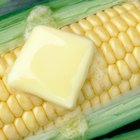
Common Food Emulsifiers

Main Ingredients of English Muffins

Which Country Produces the Most ...

Can You Substitute Butter for ...

What Additives Are in Flour?
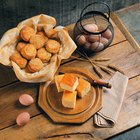
What Can I Use as an Egg Substitute ...

What Is Artisan Bread?
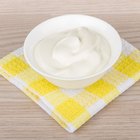
What Are the Ingredients in Yoplait ...

How to Make Scones

Can I Substitute Bleached for ...

Can You Make Dumplings With Corn Starch?
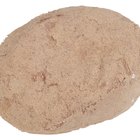
Do Snickerdoodles Need Cream of Tartar?
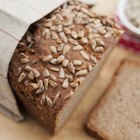
Russian Rye Bread vs. Pumpernickel

What Works With Baking Soda Besides ...

What Are the Benefits of Torula Yeasts?
Does Cake Flour Contain Baking Soda & ...
References
Writer Bio
Julie Christensen is a food writer, caterer, and mom-chef. She's the creator of MarmaladeMom.org, dedicated to family fun and delicious food, and released a book titled "More Than Pot Roast: Fast, Fresh Slow Cooker Recipes."
Photo Credits
Comstock Images/Comstock/Getty Images